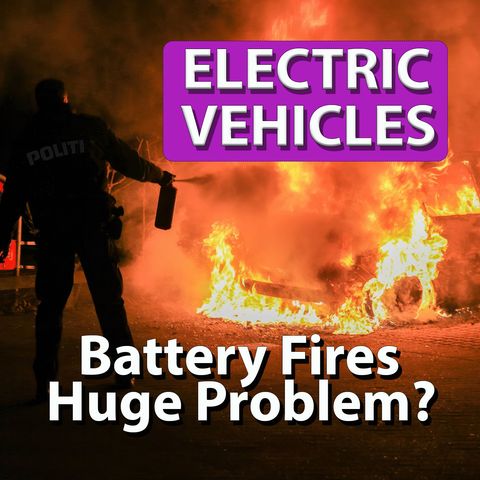In this episode, we discuss the important topic of electric vehicle fires and the implications these incidents can have. When comparing EV fires to those in internal combustion engine vehicles, the numbers reveal that EV fires occur at a rate of just 0.0012%, far lower than the 0.1% seen in traditional gasoline-powered cars and trucks. That's nearly 100 times less! What's behind these EV fires? Damage to battery packs, issues with the battery management system, and even submersion in water, especially saltwater, can trigger thermal runaway. When an EV fire does occur, the high voltage battery packs burn intensely, with temperatures reaching 5,000°C. That's vastly hotter than the roughly 1200°C seen in internal combustion engine fires. These extreme temperatures release toxic fumes and gases that can also fuel explosions as the battery pack ruptures. Extinguishing an EV fire requires copious amounts of water, with estimates of 30,000 liters or more needed to fully extinguish and cool the battery pack. That's compared to just 1,200 liters typically needed for a gasoline car fire. Once extinguished, the contaminated water runoff becomes an environmental hazard. The burned vehicle itself poses additional risks, as smoldering inside the battery can lead to re-ignition for up to two weeks after the initial fire is put out. Proper handling and disposal protocols are critical. In summary, while electric vehicle fires grab headlines, the data shows they are statistically less likely to occur than fires in internal combustion engine vehicles. Still, their high-voltage batteries present unique risks and challenges for first responders and environmental safety. Understanding these threats, and planning effective response strategies, allows us to maximize the benefits of electric mobility while minimizing the risks. This information on this site is intended as a general reference for Internet users. It is made available on the understanding that Talking Automotive with Mark & John, as a result of providing this information, is not engaged in providing professional advice. Viewers & Listeners should seek their own advice re undertaking any commercial actions. All information in this site is provided "as is", with no guarantee of accuracy, timeline
show less


Comments